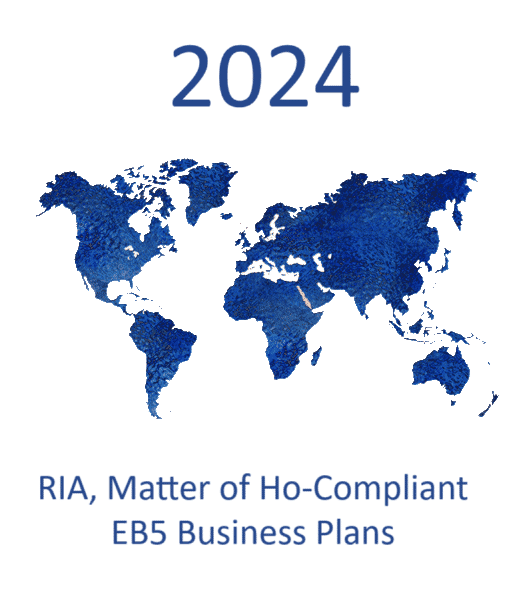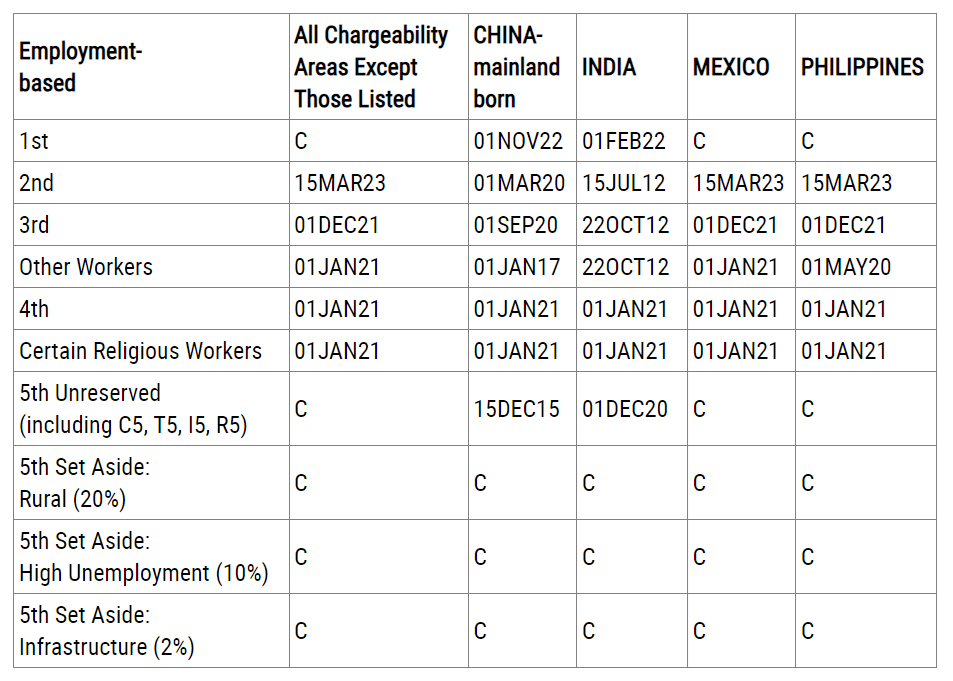EB5 Business Plans for Immigrant Investors
The last couple of years have brought a paradigm shift in the EB5 program and its requirements. These changes have impacted all aspects of the program, including business plan development.
Our EB5 business plans are completely aligned with the new reality. We have incorporated the requrements of the Reform and Integrity Act of 2022 into our plans. After a period of fluctations amid court cases, the current investment amounts are:
Targeted Employment Area Investment: $800,000
Investment in a Non-TEA Area: $1,050,000
Matter of Ho Compliance
Whatever else changes, the Matter of Ho requirements for a business plan will endure. Any business plan submitted with Form I-526 petition must be Matter of Ho compliant. The information presented regarding the location of the business and possible contingent locations must contain sufficient detail to meet Matter of Ho requirements. All of our plans are Matter of Ho-compliant and, if necessary, we will work with you to ensure that your plan meets this litmus test. Learn more here about the EB5 Investor Classification.
We have helped clients obtain over $100,000,000 in funding in the last five years.
2024 EB5 Visa Issusance
As of June 6, 2024, 14,169 EB-5 visas were available in the unreserved category for fiscal year (FY) 2024, with 5,070 issued in the first half of the year. This represents a 64% year-over-year increase from the same period in FY 2023. However, the State Department typically aims for a 27% visa usage rate in the first quarter of each fiscal year, so only 17% of unreserved visas were used in Q1 2024.
The Department of State also predicts that there will be more than 14,000 unreserved EB-5 visas available in FY 2024, and more than 11,000 in FY 2025.
Reserved Visas
The 2022 EB-5 Reform and Integrity Act specifies that USCIS shall prioritize processing and adjudicating EB-5 petitions for regional center investments in rural areas. The EB-5 reserved, set aside, visa category introduced by the of Act are allocated for investments in targeted employment areas (TEAs), including rural areas (20%), high-unemployment areas (10%), and public infrastructure projects (2%). These visas offer several key advantages, particularly for investors from high-demand countries:
- Faster processing times: Reserved visas allow investors to effectively "skip" the waiting line and immigrate to the United States more quickly, especially beneficial for applicants from countries with high visa demand like China, India, and Vietnam.
- Guaranteed visa availability: Investors assigned to the reserved categories are guaranteed to obtain an EB-5 visa upon approval of Form I-526, regardless of their country's EB-5 visa demand and availability.
- Exemption from cutoff dates: Chinese investors in the reserved categories will be exempt from cutoff dates that typically delay their immigration process.
- Shorter wait times: The reserved visa benefit can potentially shorten an EB-5 investor's wait time by several years.
EB-5 Reform and Integrity Act of 2022
On March 15, 2022, President Biden signed the EB-5 Reform and Integrity Act of 2022, which revised INA 203(b)(5). The EB-5 Reform and Integrity Act of 2022 enhances transparency and fairness in the EB-5 program through several key measures:
- Stronger background checks: The act mandates background checks for regional center leaders, project developers, and other associated individuals. This helps prevent fraud and ensures only reputable parties are involved in EB-5 projects.
- Increased oversight: The Department of Homeland Security (DHS) is empowered to conduct inspections, ensure compliance, and deter illegal activity. This increased oversight helps maintain the integrity of the program.
- Establishment of the EB-5 Integrity Fund: This special fund finances fraud detection, investigations, and site visits. Regional centers are required to pay annual fees to support these activities.
- Improved disclosure requirements: The act requires full disclosure of all fees to investors, which must be filed with investor petitions. This ensures investors have complete information about the costs associated with their investment.
- Promoter regulations: Promoters, including migration agents abroad, must register with USCIS, follow guidelines for immigration and securities compliance, have written agreements with issuers, and disclose all fees to investors.
- Material change reporting: Regional centers must report material changes to projects in their annual reports, including any disclosures made to investors about these changes. This keeps investors informed about significant developments in their investments.
- Fund administration requirements: In the absence of audited financial statements shared with investors, New Commercial Enterprises (NCEs) must maintain EB-5 capital in insured separate accounts and retain a third-party fund administrator to ensure proper capital flow.
- Designated point of contact: The act calls for a designated point of contact within USCIS to provide information and updates to applicants. This improves communication and transparency in the application process.
EB5 Direct Investment Business Plans
This direct investment business plan meets and exceeds all of the USCIS requirements for such a plan. USCIS-approved methodologies for job calculation are used. In fact, the only substantial difference between this plan and one submitted through a regional center is the method of job calculation. The plan must be reasonable. Whether the plan is to be used to attract investors or to validate the investment of a lone immigrant petitioner into the business, it is created to the same high standard.
Do You Need an EB5 Business Plan?
Contact us if you need an EB5 business plan for a regional center or a standalone, direct investment.
Employment-Based Final Action Dates, August 2024
This bulletin summarizes the availability of immigrant numbers during August for: “Final Action Dates” and “Dates for Filing Applications,” indicating when immigrant visa applicants should be notified to assemble and submit required documentation to the National Visa Center.
Unless otherwise indicated on the U.S. Citizenship and Immigration Services (USCIS) website at www.uscis.gov/visabulletininfo, individuals seeking to file applications for adjustment of status with USCIS must use the “Final Action Dates” charts below for determining when they can file such applications. When USCIS determines that there are more immigrant visas available for the fiscal year than there are known applicants for such visas, USCIS will state on its website that applicants may instead use the “Dates for Filing Visa Applications” charts in the Bulletin.
USCIS EB5 Resources
The EB5 Investor Classification
The EB5 Investor Classification (Chinese)
EB5 Immigrant Investor Program
EB5 Investors
EB5 Investors (Chinese)

